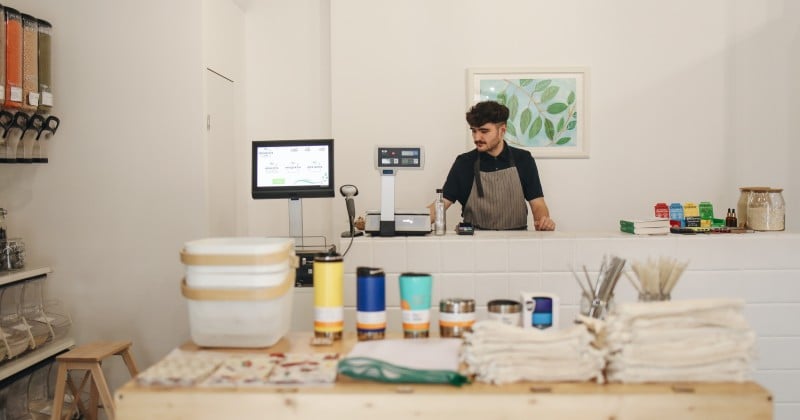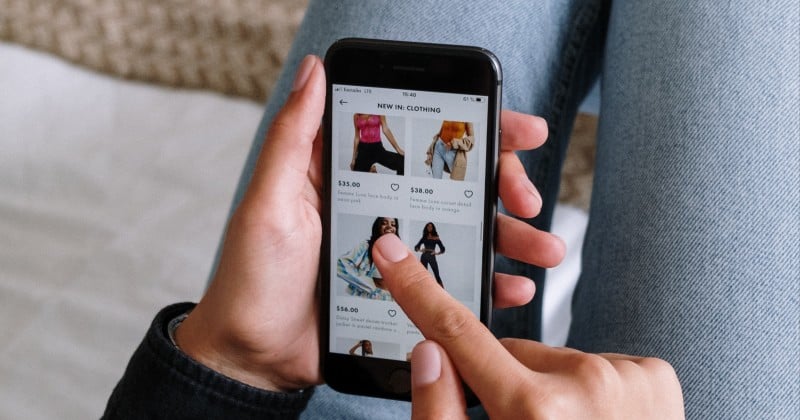Updated: May 6, 2024- 13 min read
The retail industry stands at the intersection of technology, market dynamics, and evolving consumer preferences. Nowhere is this evolution more evident than in the digital marketplace. With its unique blend of technological talent, retail innovation strategies, consumer habits, and a medley of market players, China has led the way in crafting a digital market like no other.

But the story doesn't end in China. You've undoubtedly felt the ripples of change, regardless of where you are. Innovation in retail is a global phenomenon, driving transformative shifts in consumer experiences and redefining competitive landscapes. Whether it's the advancements in e-commerce, the integration of omnichannel touchpoints, or the tailored experiences created through personalization, the retail world is in a state of dynamic flux.
As we venture further, we'll explore this expansive field of retail, shedding light on its innovative facets and strategies with real-life examples.
Disruption in Retail
It's clear that major changes are taking place in the world of retail. This goes beyond the typical market shifts. A group of consumer-focused innovators, backed by advanced technology and data analytics, are actively shaping the future of retail.
As a product leader, you need to be right in the thick of this revolution, discerning trends, and navigating changes by acquiring retail innovation strategies.

Disruptors
Amazon, Walmart, or Costco aren't just names on a balance sheet. These giants, riding on their exponential growth, are weaving multi-industry, consumer-centric ecosystems. They are leading the charge, reshaping the retail sector through strategic resource integration and technological spearheads. However, it's not just these titans that hold the reigns.
Partners
With the blistering pace of retail transformation worldwide, service and tech suppliers have carved an indispensable niche. These entities aren't mere spectators. They are co-pilots, hand in hand with the disruptors, jointly reengineering the retail ecosystem with technology and relentless innovation.
Retailers
Traditional retailers, sensing the seismic shifts, are recalibrating their strategies, actively responding to changing consumer behaviors, technological leaps, and the holistic transformation of the retail ecosystem. It's adapt or perish, and many are choosing the former with vigor.

Think of IKEA for instance, with its Augmented Reality-infused app 'IKEA Place', which is pushing the boundaries of virtual shopping, proving that innovation isn't the sole domain of tech giants. Or, over in South Korea, Lotte's "Smart Store" is turning shopping into a sci-fi episode with IoT, AI, and Big Data coming together. And don't forget Zara's rapid-response model in Spain, where data analytics leverages customer feedback to inform stocking decisions within weeks.
The lesson here? Disruption in retail isn't a singular story of tech titans. It's a tapestry of innovation, woven with threads from players big and small, conventional and avant-garde.
Consumer expectations
Consumers' expectations are evolving, and relying on traditional retail strategies doesn’t cut it anymore. You need to come up with retail innovation strategies to stay on top.
To do this, you need to decode the nuances of today's consumer desires. Let’s have a look at some of these consumer trends and how to adapt your retail strategies:
Make it easy
In the age of information overflow and endless choices, consumers are gravitating towards simplicity. They're not just chasing products; they're seeking experiences that respect their time, their intelligence, and their individuality. As product leaders, understanding and implementing this ease in the customer journey is more than a strategy—it's the very fabric of successful retail today.
Here are some actionable retail innovation strategies to infuse 'ease' into your products:

Intuitive user interface
Whether it's a website, mobile app, or even an in-store kiosk, the interface should be user-friendly. Minimize the steps to purchase, employ clear calls to action, and eliminate unnecessary jargon.
Unified shopping experience
Price discrepancies, product availability, and promotional offers should be consistent, preventing any customer confusion.
Quick checkouts
Reduce cart abandonment rates by streamlining the checkout process. Offer guest checkouts, save payment details securely for repeat customers, and provide multiple payment options.
Flexible return policies
Make returns and exchanges hassle-free. Clearly communicate the return policy and consider offering prepaid return labels or in-store return options for online purchases.
Personalized Recommendations
Harness the power of AI and machine learning to provide product suggestions based on browsing history, previous purchases, or even current trends.
Take a look at Target. Recognizing the value of a unified shopping experience, they rolled out their "Drive Up" service in various locations. Now customers can place an order through the Target app and have it delivered to their car within minutes of arriving at the store. It's a testament to how they've married digital convenience with the immediacy of physical retail, truly epitomizing 'ease' in the modern shopping era.
Make it personal
The evolution of consumer expectations has led us to an era where personal touchpoints aren't just preferred—they're demanded. Gone are the days of one-size-fits-all. Today consumers are overwhelmed with options, so personalization is the key to capturing their attention and loyalty.
Here are just a few of the ways you can leverage personalization in your innovation strategy:

Deep dive into data
Leverage data analytics to understand your consumers better. Track their purchase history, online behavior, feedback, and even complaints. This gives invaluable insights into their preferences and habits.
Dynamic content display
Use AI to customize the content shown to different users based on their interactions. For instance, show them products similar to what they've browsed or purchased before.
Loyalty programs with a personal touch
Instead of a generic loyalty program, offer rewards based on individual preferences. If a customer often buys skincare products, offer them early access or a discount on a newly launched skincare item.
Augmented Reality (AR) try-on
For retailers in the beauty or fashion industry, AR can be a game-changer. Allow users to virtually try on a product before buying, giving them a personalized feel of the product.
Interactive product customization
Give consumers the option to customize products. Whether it's choosing the ingredients for their skincare product or the colors for their sneakers, this adds a personal touch to the product.
Engage through Social Media
Respond to comments, feedback, and messages on social media platforms. Encourage user-generated content, like photos or reviews, and feature them on your platforms, making the customers feel valued and recognized.
Starbucks is an excellent example of personalization done right. Their mobile app isn’t just about making payments or viewing the menu. Based on purchase history, it offers personalized drink suggestions. Moreover, their rewards program is designed to understand individual customer preferences and offer tailor-made rewards. Remember the birthday discounts? That's Starbucks making your experience truly personal on your special day.
Make it Special
As retail continues to evolve, there's a heightened focus on creating memorable moments that extend beyond the transactional and weave themselves into the narrative of customers' lives.
This is the new arena of differentiation. So, how can you harness this potential to make products and experiences special? Here's a guide to spark exclusivity:

Limited edition collections
Offer products that are available only for a short duration or in limited quantities. This not only creates a sense of urgency but also a sense of possession for those who manage to get their hands on them.
Personalized packaging
Go beyond the product. Elevate the unboxing experience with personalized messages, unique packaging designs, or even QR codes that lead to exclusive digital content.
VIP access and pre-launches
Reward loyal customers with early access to new product launches or special events. This gives them a feeling of being part of an exclusive club.
Collaborations
Partner with celebrities, influencers, or renowned designers to introduce co-branded products. Such collaborations often bring together fans from both sides, generating excitement and anticipation.
Curated events
Organize in-store or virtual events where customers can learn more about products, meet with experts, or even attend workshops. Think wine-tasting events, DIY craft sessions, or exclusive fashion shows.
Loyalty beyond points
Instead of just offering points for purchases, think of creative rewards such as a personalized shopping assistant for a day, exclusive masterclasses, or even a chance to influence upcoming product lines.
MAC Cosmetics often collaborates with popular cultural icons to release limited-edition makeup collections. From the iconic Selena Quintanilla collection to the recent Disney's "Aladdin" collection, these collaborations offer unique shades and packaging, making them collector's items. Fans eagerly await such launches, often queuing up or logging in early to ensure they secure these special products.
Is a bigger investment always an assurance of innovative success?
Now, juxtapose consumer expectations against the backdrop of the financial intricacies of retail. Yes, budgets are real, and so are the constraints. Some giants are flexing their financial muscles, allocating almost 4% of their revenue to IT innovations, while others operate with a conservative 0.6%. Does this disparity spell doom for the latter?

Not necessarily. Peeking behind the curtain of IT spending, you'd realize that innovation isn't purely a monetary game. It's about agility, strategic ingenuity, and making the most of what's available. Take, for example, brands like Warby Parker. They disrupted the eyewear market, not just with their online-first approach but with their 'Try at Home' experience, marrying digital and physical realms effortlessly. Or Bonobos, with their Guideshop concept, allowing customers to experience products physically, but making the purchase online.
The message is clear: Disruption in retail isn't about deep pockets. It's about deep insights, understanding consumer pulses, and adapting dynamically.
How to embrace innovation in retail
In retail, there's a wide range of areas that are ripe for innovation. It's key to recognize these areas and understand how to capitalize on them, from enhancing the shopper's journey to melding the physical and digital worlds.

Refining e-commerce foundations
It’s pivotal to understand that the backbone of your e-commerce operation isn't merely the front-end consumers see, but its robust foundation.
Here’s how you can refine and solidify yours:
Invest in backend technologies
Beyond the glitz of the front end, robust backend technologies ensure seamless operations, from inventory management to order processing. Consider adopting cloud-based solutions for scalable and resilient systems.
Optimized search capabilities
With voice-powered search becoming increasingly prevalent, it's time to fine-tune your online store's search functionalities. Ensure your products are optimized for voice search and provide accurate results for user queries.
Balancing data insights and privacy
While it's crucial to gather data for a more personalized shopping experience, always prioritize user data protection and privacy. Be transparent about the data you collect, and ensure GDPR and other regional data protection standards are met.
Innovative payment options
From cryptocurrency to buy now, pay later options, being flexible and forward-thinking in your payment solutions can set you apart.
Take ASOS, for instance. This global fashion giant frequently revamps its mobile app and website to ensure an intuitive and engaging shopping experience. They harness AI for product recommendations, and augmented reality (AR) for virtual try-ons, and have adopted a clear and transparent approach to data privacy. Their "Fit Assistant" tool uses machine learning to provide size recommendations based on user profiles, ensuring that customers get products that fit right the first time around.
This kind of innovative approach to e-commerce ensures not only an enhanced user experience but also promotes brand loyalty.
Elevating customer experience
We're not talking about just another 'sale'. This is about the human connection, the emotional resonance, the memorable encounters that turn a casual browser into a brand evangelist. While technology is a potent enabler, the essence lies in the subtleties and the nuances of interaction.
Here's how you can master this art:

Embrace omnichannel experiences
Ensure that your customer’s journey is consistent and interconnected across online platforms, mobile apps, and physical stores. It's the magic of shopping online and seamlessly picking up or returning in-store.
Personalized recommendations
Invest in machine learning to offer tailor-made product suggestions based on user behavior, preferences, and past purchases. Give them the feeling of, "This brand gets me!"
Interactive engagement
Augmented Reality (AR) and Virtual Reality (VR) are changing the shopping paradigm as immersive tech enhances decision-making.
Humanize support
Automation is great, but human touchpoints matter. Ensure your chatbots smoothly transition to human reps when needed. Personalized, empathetic customer service always wins.
Take a leaf out of Sephora's playbook. This beauty retailer has masterfully blended the physical and digital spheres. In their stores, 'Sephora Virtual Artist' uses AR to allow customers to try on thousands of lipstick shades, eyeshadows, and lashes virtually. They've integrated this feature into their app as well, ensuring a cohesive experience. Moreover, their Beauty Insider program provides tailored product recommendations, birthday gifts, exclusive events, and more, nurturing a vibrant community of beauty enthusiasts.
Mastering the omnichannel experience
As you navigate retail in this digital age, you're bound to encounter the term 'omnichannel'. More than just a buzzword, this strategy addresses the blend of physical and digital touchpoints, making the shopping experience smooth, consistent, and delightful.

However, to truly master this approach, one needs a deep understanding of not just technology, but of human behavior. Let's dive into the retail innovative strategies you can deploy:
Unified customer profiles
Centralize customer data from all channels to create a single view. This will enable you to provide more targeted offers, personalized product suggestions, and efficient support.
Seamless checkout process
Integrate systems to ensure that cart items and wishlists sync across devices. A product added from a mobile should be there when they switch to a desktop or even when they walk into a store.
Click-and-Collect services
Allow customers to make a purchase online and pick it up in-store. This not only drives foot traffic but also presents opportunities for upselling and cross-selling.
Real-time inventory management
Ensure that your online platforms reflect the in-store inventory in real time. This prevents issues of over-promising and under-delivering.
Leverage physical stores for online returns
Make returns hassle-free. Allow customers to return online purchases in-store. This reduces the friction and enhances the chances of an exchange or new purchase during the visit.
Nike, the global athletic brand, is a stellar example. Their 'Nike by Melrose’ store in Los Angeles is the epitome of omnichannel retailing. The store inventory is based on local online shopping data, ensuring it stocks what the neighborhood wants. Their app interacts with the store: You can reserve items, find them on mannequins, and even try them in real life. If you buy online, you can pick up in lockers in the store. This synergy between digital data and physical store operations ensures Nike is not just selling shoes, but a tailored shopping experience.
As you strategize your product journey in retail, it's essential to consider the omnichannel approach not as an option but as a necessity. Your customers are everywhere, and they expect you to be too. Embrace the challenge, innovate relentlessly, and craft journeys that are as unique as each of your customers.
Learn More with Product School
To discover more about how innovation and product management can drive digital transformation in your organization, don’t miss out on our custom team training. Our tailored team training, led by Silicon Valley experts, offers a deep dive into the strategies and tools that can propel your business forward. Designed specifically for your unique challenges, our sessions will equip your team with the knowledge to stay ahead
Schedule a call now to find out more about how our training sessions can give your organization a competitive edge.
Updated: May 6, 2024





